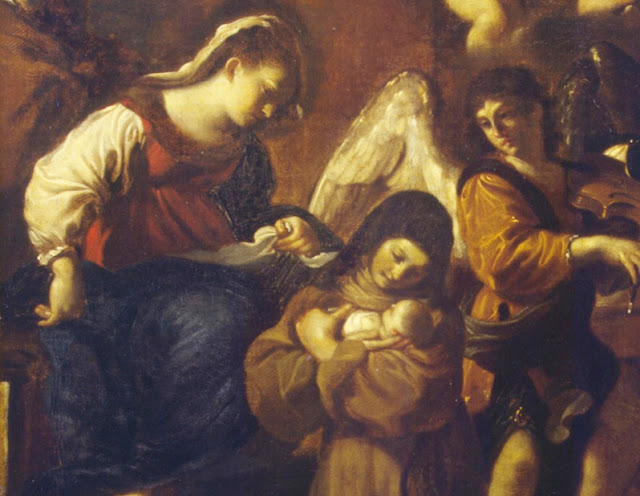Vision of saint Clare by Guercino 1615
Saint Clare Adoring the Christ Child, Guercino, c. 1645
This painting, attributed to Guercino during his mature period, demonstrates his characteristic balance between naturalism and gentle devotional sentiment. Although Guercino’s early works were notable for dramatic chiaroscuro and emotional intensity, his mature style reflects a measured refinement influenced by the work of Guido Reni. Yet, unlike Reni’s ethereal and idealized forms, Guercino grounds his figures with a down-to-earth humanity, giving them weight, warmth, and emotional immediacy.
The scene portrays a young Saint Clare receiving the Christ Child directly from the Virgin Mary. Mary, serene and composed, gently places the Infant Jesus into Clare’s arms, conferring not only a physical gesture of care but also a symbolic transmission of spiritual motherhood and intimacy with Christ. Clare holds the Child very close to her chest, cradling Him with tender devotion as she lowers her gaze toward Him in quiet wonder and love. Her expression suggests both reverence and a personal, interior joy.
An angel stands nearby, softly playing a violin. This musical presence enhances the sacred atmosphere, as if divine harmony is being made audible within the scene. The angel does not draw attention to itself but contributes to a mood of contemplative celebration, elevating the emotional tone from human affection to heavenly devotion. The composition, with its gentle lighting and rounded forms, reflects Guercino’s mature synthesis of devotional sincerity and grounded naturalism, creating a moment that feels both intimate and sacred.






Comments
Post a Comment